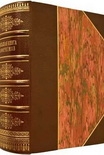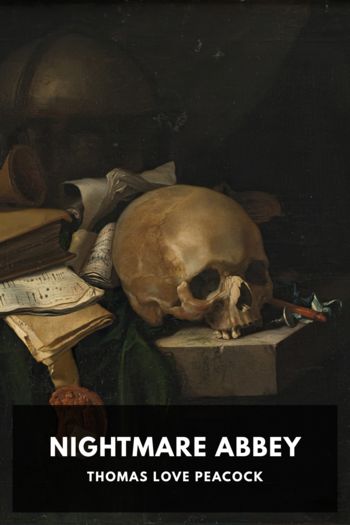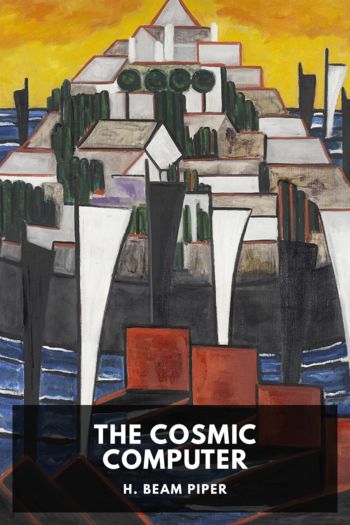Gluck, Diana Souhami [good novels to read in english txt] 📗

- Author: Diana Souhami
Book online «Gluck, Diana Souhami [good novels to read in english txt] 📗». Author Diana Souhami
Nesta bought an eiderdown for the studio bed which was a great success. Mabel thought it ‘looked so light as if it would fly up any moment’. It was not quite big enough so Gluck wanted to pay for an extra one. ‘Then it is really and truly household, isn’t it?’ The idea of shared domesticity was important to her, as visible proof of their relationship, though it would be hard to imagine two women less interested in domestic chores.
Gluck bought an anchor for the punt in which they spent their romantic afternoons on the lake at the Mill House ‘specially made and a chain to match … I think it ought to make quite a difference to our pleasure and comfort.’ She painted them lazing in it, she leaning against Nesta, the end of the punt stretching out across the water like a bright path that leads nowhere. (The director of The Fine Art Society thought the picture suggestive and would not have it in Gluck’s 1937 exhibition.) They went with Leon M. Lion and Lord and Lady Hollenden to H. G. Wells’s seventieth birthday party at the Savoy in October 1936. It was given by the PEN club and there were 500 guests. (No doubt Edith Heald, a founder member of the club, with whom Gluck was to live for thirty-five years, was there.) They went to the first night of Boris Godunoff at Covent Garden, to Cosi fan Tutte at Glyndebourne, to supper at the Savoy, to the Café Royal. Molly Mount Temple came to dinner, as did Ernest Thesiger, Osbert Lancaster, the Maufes, the Villiers, the Toyes, the Greenes. And above everything, in the whirl of it all, Gluck worked. The eighteen-month build up to her fourth exhibition, in November 1937, was an extremely productive time. She tackled a whole range of new work and completed canvases already begun.
‘Just this Beloved, nothing but happy pictures since Youwe’, she wrote to Nesta. In ‘Noel’ she wanted to reflect her new sense of freedom. It was unlike anything she had worked on before. She did not draw first, but painted directly, delighting in conveying the textures of the things she was painting, feeling very ‘robustious’ as she put it and cracking crackers to get in the revelling mood. She got the streamers and blue frilled paper from Woolworth and the sinister mask is one she had torn as she put it on Nesta’s head the previous Christmas. She worked at the picture for three or four months in 1937, one day painting a pale pink cracker, the next a little silver ball and, for days on end, the striped damask tablecloth. She strove to make the whole thing look as if it had been dashed off in a moment. She wanted the cake to look wobbly and unprofessionally made. There are little silver edible decorations, piped icing and a precarious robin. At times she thought it the limit of banality, but in the end she declared herself pleased, gave it ‘satisfied and slightly bloated looks’ between sips of tea and writing to Nesta, and wanted it to hang beside ‘YouWe’ in her 1937 show.
Two of her best portraits of women were to appear in this. There was ‘The Lady Mount Temple’, dressed by Schiaparelli in the absolutes of black and white, her hat perched on her head at an angle of conquest, her jewellery worn like military decoration, the veins in her hands revealing her age, her head cocked to one side as she looks down on her viewer with the arrogance and authority of her class. Equally telling psychologically, and technically better, was the portrait of the best-selling novelist, Susan Ertz, a friend of both Gluck and Nesta. Her serenity and elegance are emphasized by the muted browns of her clothes and the pale green silk of the upholstery. Her husband, Ronald McCrindle, commissioned the painting in 1936, but thought it made his wife look ten years too old. Gluck waited ten years and then offered it again through a letter from Nesta. Susan Ertz hung it over the drawing-room fireplace of her Kensington house and insisted on giving Gluck the original commissioning fee of£50.
The flower groups in the 1937 exhibition all showed Constance’s influence the considered displays and careful choice of vases. The large-scale ‘Nature Morte’, or ‘Dead Group’ as Gluck called it, the skeletons of flowers and grasses in an alabaster vase, all delicately painted in pale silvers, greens and browns, reflected Constance’s view that anything from the hedgerow could provide material for an arrangement.
Gluck was aware of a sexual element in many of her flower paintings. Of ‘Lords and Ladies’ a picture of wild arum lilies, she wrote to Nesta, ‘How can these flowers be female? Anything more male than this prominent feature I cannot imagine.’ As she painted the flowers she wrote of ‘loving them and stroking them with my most chosen brushes’. Of the blousy display, ‘Lilac and Guelder Rose’, Lord Villiers remarked, ‘It’s gorgeous. I feel I could bury my face in it.’ Gluck called a painting of flowering chestnut ‘Adolescence’ and, with her typically unusual application of sexual stereotype, described the two blooms as a boy of eighteen and a girl of sixteen. The ‘girl’, she wrote, was wistful, slimmer and higher up in the picture so that the ‘boy’ has to reach up to get her. She cut the two branches for the picture from the chestnut tree in the garden of her neighbours, the Toyes, while they were away. ‘The bits I cut were taken from where it didn’t make any difference to its divine shape – and Oh how lovely they are!’7
While working on this picture she wrote to her mother (13 December 1936), urging her to recapture her adolescent self ‘the real you … was what you were before you married.… One’s adolescent ideal





Comments (0)